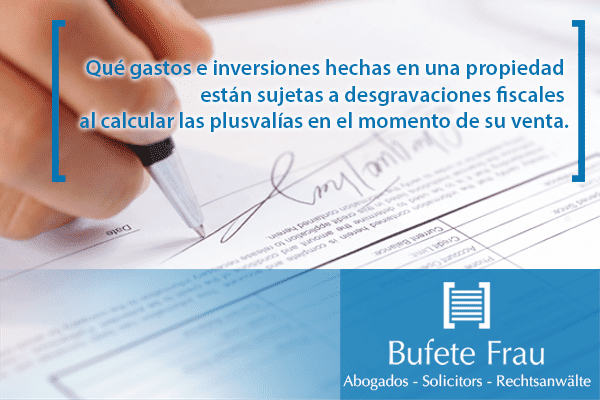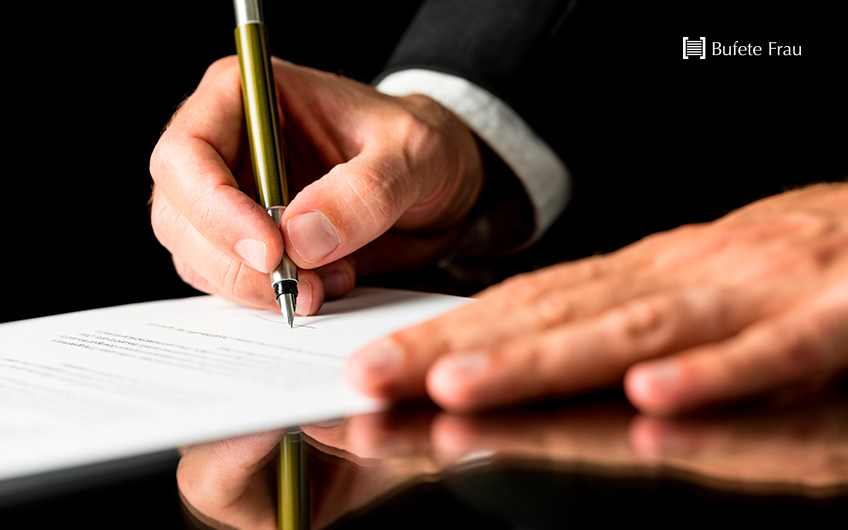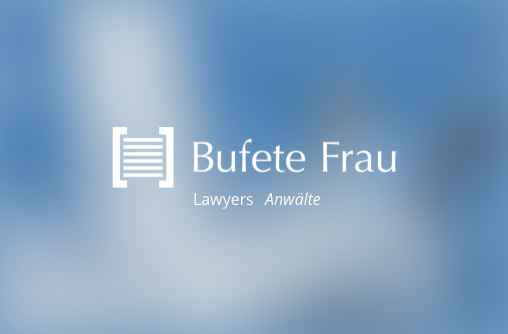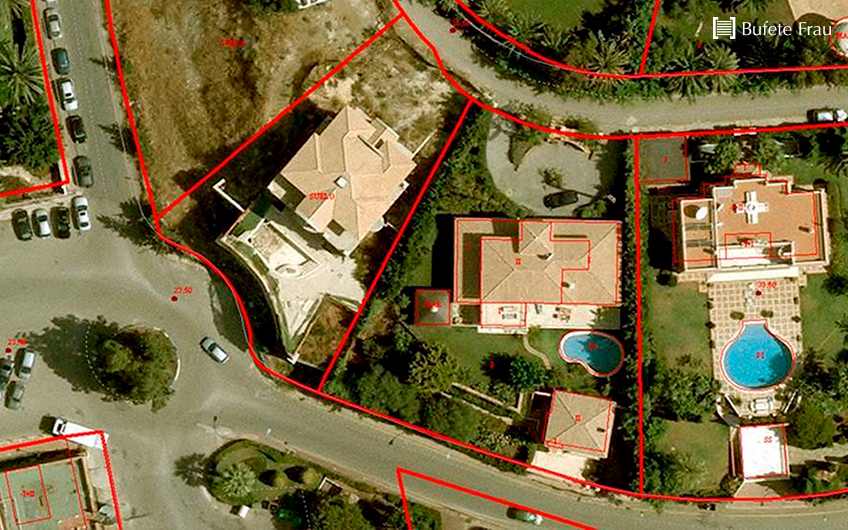
Binding Resolution of the Directorate General for Taxation, V5370-16 of 20 December 2016.
Organ:
SG for Personal Income Taxes.
- Date: 20 December 2016
- Ruling No.: V5370-16
Regulations
LIRPF. Law 35/2006, Art. 35.
Question
– You are requesting information on which expenses and investments made on a property purchased in 2002 are tax deductible when determining the capital gain generated at the time of sale.
– What are the expenses that increase the value of the property. Ask for a breakdown of the renovations, in case they are tax deductible.
Description
Corresponds to the question raised.
Answer
The transfer of a property will generate a capital gain or loss for the taxpayer, as there is a change in the value of his assets which becomes apparent as a result of an alteration in their composition, in accordance with the provisions of article 33.1 de la Ley 35/2006, de 28 de noviembre, on Personal Income Tax and partially amending the laws on Corporate Income Tax, Non-Resident Income Tax and Wealth Tax (BOE of 29 November), hereafter LIRPF, and is therefore subject to the tax, in accordance with the provisions of Article 6.1.
Article 35 of the LIRPF provides as follows as regards transfers for valuable consideration:
1. The acquisition value shall consist of the sum of:
(a) The actual amount for which such acquisition would have been made.
b) The cost of the investments and improvements made in the assets acquired and the expenses and taxes inherent in the acquisition, excluding interest, which have been paid by the acquirer.
Under the conditions laid down in the regulations, this value shall be reduced by the amount of depreciation.
2. The transfer value shall be the actual amount for which the disposal would have been effected. The expenses and taxes referred to in paragraph 1(b) shall be deducted from this value in so far as they are paid by the transferor.
The actual amount of the disposal value shall be taken to be the amount actually paid, provided that it is not lower than the normal market value, in which case the latter shall prevail”.
The amount of this capital gain or loss will be determined, according to Article 34, by the difference between the respective acquisition and transfer values, calculated in the manner established in Articles 35 and 36 of the aforementioned Law, for onerous and lucrative transfers respectively.
Therefore, in this case, according to the information provided in your consultation letter, for the purposes of determining the capital gain or loss, in accordance with the provisions of article 35 of the Tax Law, the actual amount for which the acquisition was made, as well as the amount corresponding to the investments and improvements made to the property and the expenses and taxes inherent to the acquisition, excluding interest, which have been paid by the acquirer, will form part of the acquisition value.
With regard to the expenses and taxes inherent to the acquisition, in accordance with the criteria of this Tax Centre in different tax consultations (binding consultations V2584-16 and V0131-04), these are those such as, among others, notary fees, land registry fees, agency fees, lawyer fees, the Tax on the Increase in Value of Urban Land corresponding to the property and paid on the acquisition, and the expenses for the Tax on Transfer of Property.
Notwithstanding the above, it should be specified that, specifically, with regard to the Tax on the Increase in Value of Urban Land, and in accordance with the criteria of this Management Centre (binding consultation V1649-13), in accordance with the provisions of article 106.1 of Royal Legislative Decree 2/2004, of 5 March, which approves the Consolidated Text of the Ley Reguladora de las Haciendas Locales (TRLRHL), the taxpayer of the tax on the increase in value of urban land in the case of transfers of land for valuable consideration will be the transferor. However, for this purpose, it will be necessary for the person making the enquiry, the acquirer of the property, to prove that, although he is not liable for the tax, he agreed with the transferor that he would pay this tax. Such proof must be provided by any legally admissible means of evidence, as provided for in article 106 de la Ley 58/2003, de 17 de diciembre, General Tributaria (BOE of 18), before the management and inspection bodies of the Tax Administration, which will be responsible for assessing the evidence provided.
No obstante, si la adquisición se realizó a título lucrativo, formará parte de dicho valor de adquisición, el Impuesto sobre Sucesiones y Donaciones (V2275-06). Asimismo, forman parte del valor de adquisición, las cuotas de IVA soportadas no deducibles, que en su momento pudieran haber gravado la adquisición del inmueble, excluidas las que pudieran corresponder a intereses (consulta no vinculante número 0808-02, de 28 de mayo de 2002).
Por otro lado, el concepto de mejora no aparece contemplado expresamente en la normativa del Impuesto sobre la Renta de las Personas Físicas. Ahora bien, la Resolución de 1 de marzo de 2013, del Instituto de Contabilidad y Auditoría de Cuentas, which lays down rules for the recording and valuation of tangible fixed assets and investment property (BOE of 8 March 2013), in section 3 of its second rule, defines “improvement” as the set of activities by means of which an alteration is produced in an item of fixed assets, increasing its previous productive efficiency.
On the other hand, the expenses for the repair and maintenance of the dwelling, which are referred to in the Tax Regulation (approved by the Real Decreto 439/2007, de 30 de marzo, BOE of 31 March), in its Article 13, when stating the deductible expenses in the determination of the yield of real estate capital.
Likewise, section 3 of the second rule of the aforementioned Resolution of the Spanish Accounting and Audit Institute defines the concept of extension, which consists of a process by which new elements are incorporated into a fixed asset, resulting in a greater productive capacity.
In accordance with these precepts, repairs and maintenance should be understood to be those aimed at maintaining the useful life of the property and its productive capacity or use, while extensions or improvements should be considered to be those that result either in an increase in the capacity or habitability of the property or in a lengthening of its useful life.
If the possible investments made by the applicant were to be considered as extensions or improvements, they would form part of the acquisition value of the property.
Consequently, if the taxpayer has carried out renovation work on his property, depending on the nature of such work, it could be classified as an improvement or extension, in which case it should be taken into account when calculating the acquisition value of the property transferred, or as conservation or repair costs, which should not be taken into account in this calculation.
In the case of matters of fact, the taxpayer must be able to duly justify, in due course, the various works by any means of proof admitted in law, as provided for, as explained above, in Article 106 de la Ley 58/2003, de 17 de diciembre, General Tributaria, before the management and inspection bodies of the Tax Administration, which will be responsible for their assessment at their request.
In general, the justification, both for these expenses and for any other disbursements which may be made by the taxpayer, must be provided by means of an invoice issued by the person carrying out the work or providing the service, which must meet the requirements established in Article 3 of Royal Decree 2402/1985, of 18 December 1985, or, more recently, in Article 3 y 6 del Real Decreto 1496/2003, de 28 de noviembre (BOE of 29), which successively regulate the duty of entrepreneurs and professionals to issue and deliver invoices, as well as to keep the supporting documents of the transactions carried out.
On the other hand, for the purposes of determining the capital gain or loss, as far as the transfer value is concerned, this will be the actual amount for which the disposal was carried out, provided that it is not lower than the market value, in which case the latter will prevail, from which the expenses and taxes inherent to the transfer that have been paid by the transferor will be deducted, such as, among others, the Tax on the Increase in Value of Urban Land, real estate expenses (for example, amounts paid for the real estate agent’s commission), and notary fees (V2584-16, of 13 June 2016, and V2275-06, of 16 November 2006).
With regard to the Tax on the Increase in the Value of Urban Land that corresponds to the seller, this tax must be paid by the seller. If it is agreed that it is the buyer who pays this tax, it constitutes a higher acquisition value of the property and does not reduce the transfer value of the transferor.
I hereby inform you with binding effect, in accordance with the provisions of paragraph 1 of article 89 de la Ley 58/2003, de 17 de diciembre, General Taxation.
If you have any questions and would like to have more information about Fiscal and Tax Law, please click on the link.
- NEWS OF URBAN OR RUSTIC PLANNING LEGALISATION - May 27, 2024
- NEW DEVELOPMENTS IN THE NEW HOUSING LAW - September 19, 2023
- DIGITAL NOMAD VISA SPAIN - August 9, 2023






